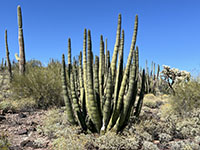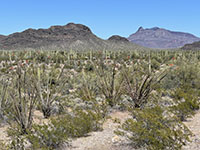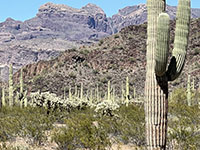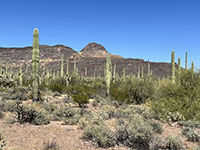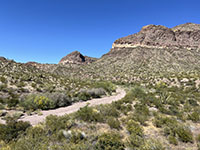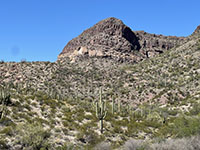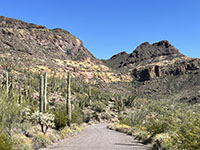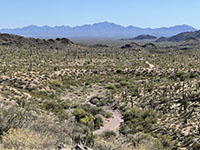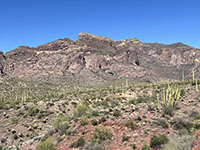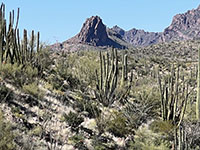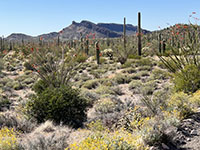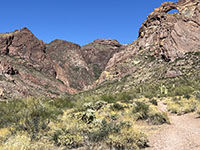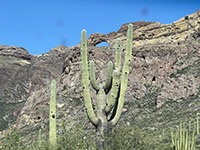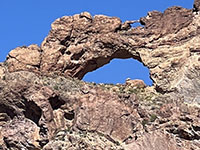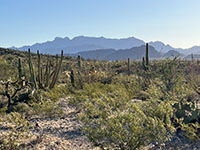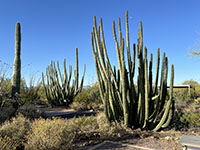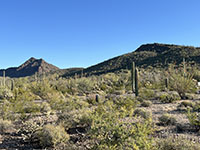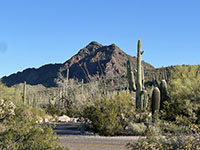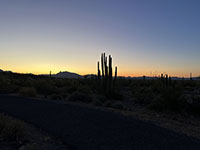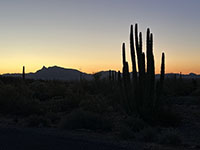
Organ Pipe Cactus National Monument
Click On Images For A Larger View. |
Return to Geology of National Parks main page. |
Organ Pipe Cactus National Monument is a showcase biosphere -wilderness preserve for the flora and fauna of the Sonoran Desert region within Southern Arizona. The namesake species of Organ Pipe Cactus National Monument is the organ pipe cactus (Stenocereus thurberi). With many slender, curving stems that some believe resemble the pipes of an old-fashioned organ. They are the second-largest columnar cactus in the United States and can grow up to 23 feet tall. They are second only to saguaro cactus (that also grow in abundance in the park) that can grow 40 to 60 feet tall. Organ Pipe Cactus National Monument Geologic Resources Inventory Report: U.S. National Park Service Natural Resource Report NPS/NRSS/GRD/NRRó2022/2399, 102 p. (.pdf file). |
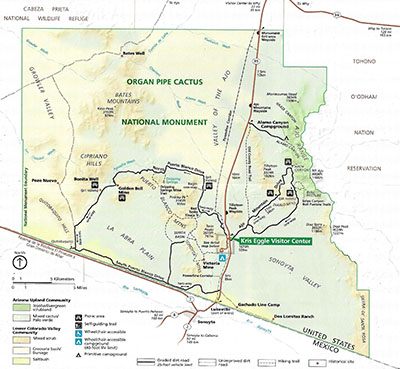 Fig. 1 - NPS map of Organ Pipe Cactus National Monument. |

Fig. 26. Panoramic view looking east at the Ajo Range from Ajo Mountain Drive.
|
